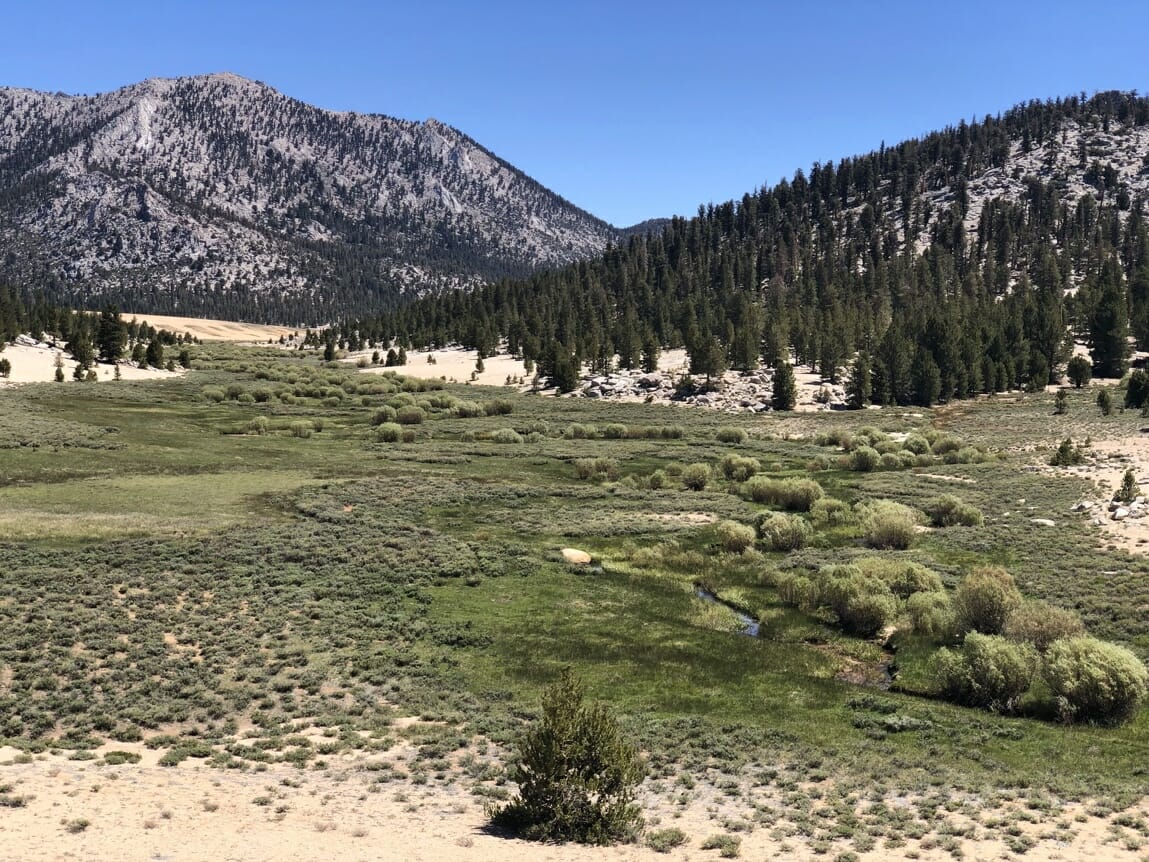Mountain meadows serve as a key habitat for many inland native trout species across the West. Unfortunately for California’s inland trout populations, some sixty percent of meadow habitat in the Sierra Nevada—home to eight distinct native trout species—is considered impaired.
For the California Golden Trout, whose native range sits above 7,500 feet in elevation and encompasses less than 600 square miles, even minor levels of meadow degradation have big impacts on resident populations. A TU-led project aims to reverse the loss of meadow habitat, reconnect floodplains, and give this iconic, listed species more room to roam.
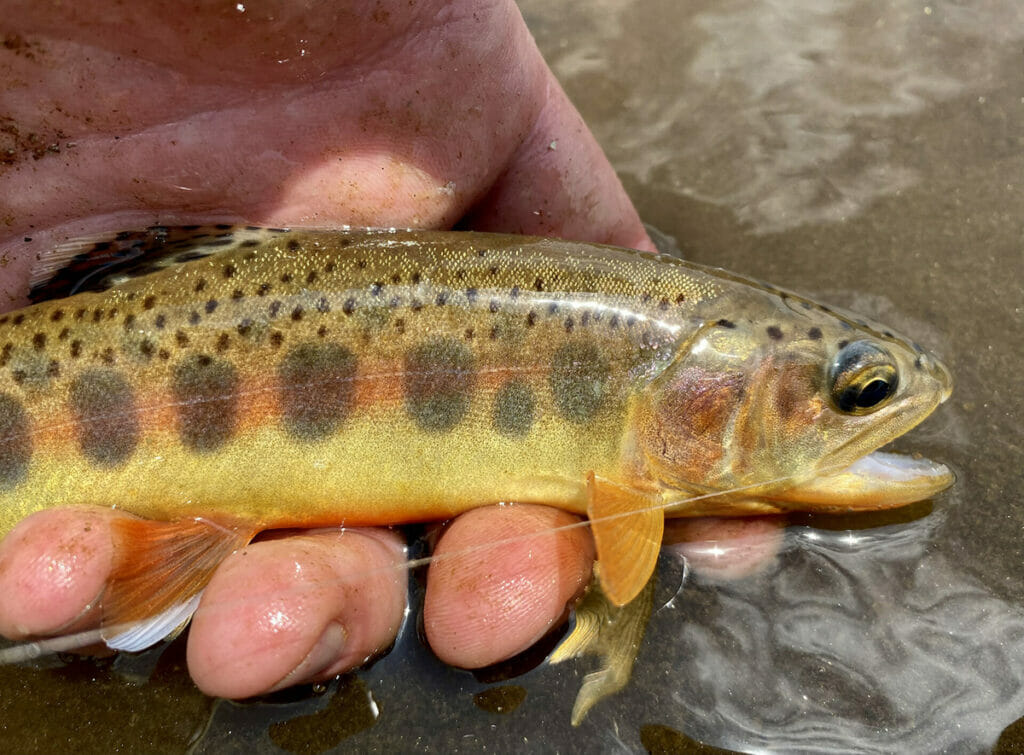
Meadows Play a Critical Role in Watershed Function
In mountain ecosystems, healthy meadows act like sponges, storing runoff as groundwater and gradually releasing that water back into streams later in the season when it’s most critical for trout and other aquatic species. By holding cold water on the landscape, healthy meadows act as safe havens for trout against drought, catastrophic wildfire, and rising air temperatures.
Most degradation of high-elevation meadows derives from legacy uses such as excessive grazing, logging, mining, and off-road vehicle use, which cause meadows to lose much, if not all, of their water storage and habitat function by turning them into a series of gullied streams disconnected from the floodplain.
Fortunately, meadow ecological and hydrological function can be restored. In the southern Sierra and elsewhere, TU’s meadow restoration work is proving that degraded conditions can be reversed and meadow systems, and the wildlife that depend on them, can recover.
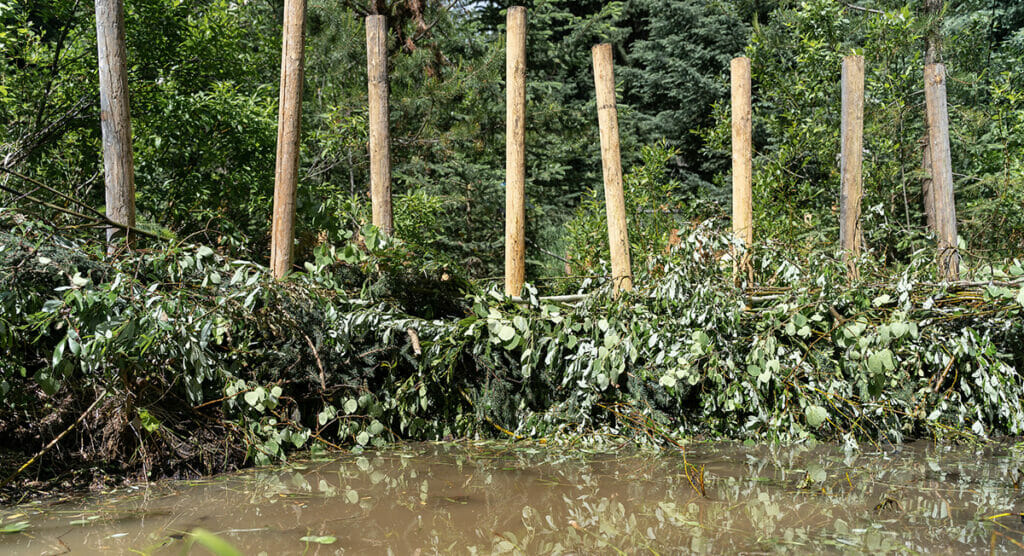
Golden Trout Meadows Project
The Golden Trout Meadows Project (GTMP) is a TU and U.S. Forest Service initiative working to advance California Golden Trout recovery by restoring degraded meadow habitat at a landscape scale. In partnership with the Inyo National Forest, California Department of Fish and Wildlife, and a slew of restoration professionals and partner organizations, we’ve embarked on a multi-year effort to restore over 3,000 acres and nearly 40 miles of California Golden Trout streams and meadows.
TU is leading this work in the heart of California Golden Trout country, a remote and rugged landscape high in the Sierra Nevada mountains, much of which is on public land. Most of this territory is also designated as Wilderness.
Doing habitat restoration work in designated Wilderness Areas can be challenging. There is no road access and use of mechanized equipment is prohibited. That means no backhoe, no chainsaw, not even a wheelbarrow, is allowed! We use pack animals to haul in hand tools and other permissible equipment, along with provisions and camping equipment for our crews who spend days at a time working far from civilization.
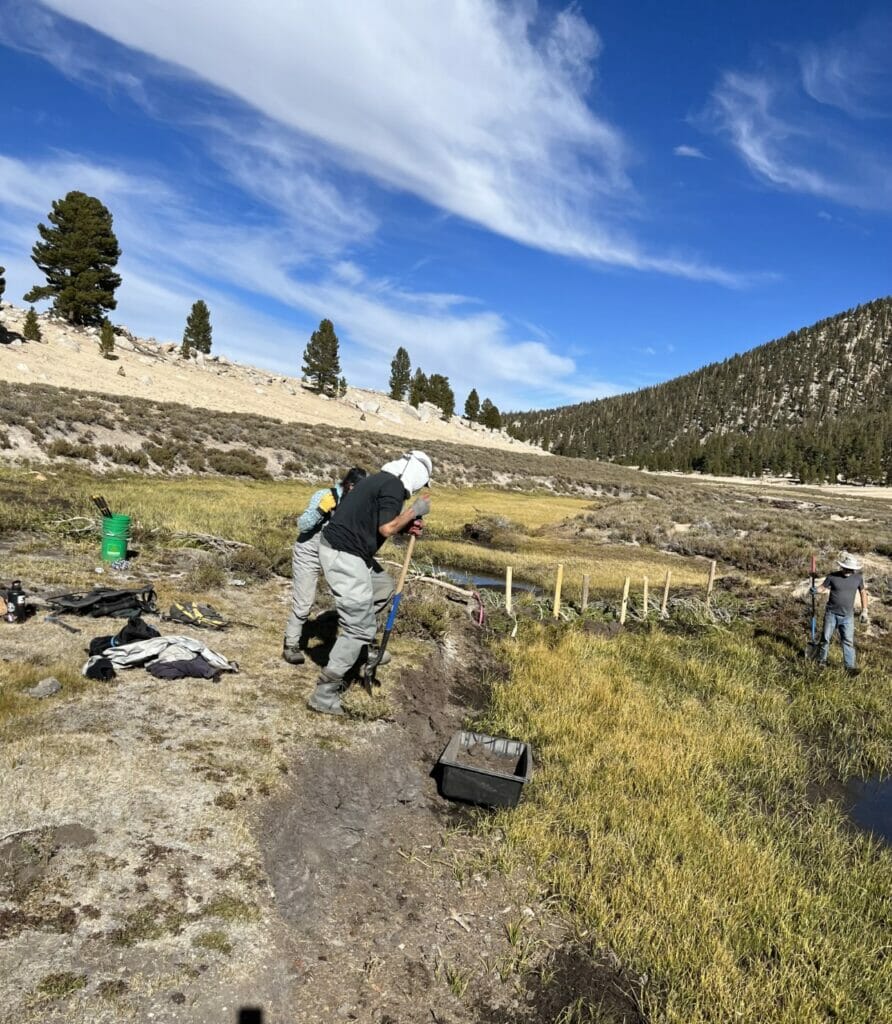
Even in the remote backcountry, we have a powerful and often-overlooked ally in this work: the water itself. To bring degraded meadow streams back to health, we are leaning into a principle and a suite of restoration techniques designed to “let the water do the work.”
Our GTMP is primarily working with Low-Tech Process-Based Restoration (LTPBR) techniques. TU staff and partners install large-woody debris jams and sedge mats and build handmade structures mimicking beaver dams. These structures restore the natural function of meadows by slowing water as it runs through the gullied stream channels. Slowing the movement of water through the meadow reconnects the stream channel to the floodplain and increases water storage on the landscape.
These interventions expand instream trout habitat by creating more deep pools and increase late season flows, thereby stabilizing water temperatures throughout the year by providing cooler water in summer and pockets of warmer water during winter.
Restoration on Public Lands Requires Collaboration
The Golden Trout Meadows Project is a large, complex effort and has been years in the making. Intense planning began with funding acquisition in 2019 and concept design development followed in 2020. Small pilot sites were constructed in 2021 and 2022.
The Forest Service initiated project planning under the National Environmental Policy Act (NEPA) in August 2022. We expect final construction approvals in spring of 2023, with actual on-site construction starting in late summer 2023.
The construction windows for this project are short due to the high elevation, but we anticipate two crews of five to seven team members will rotate between construction and monitoring from July through September every summer for the next five years, at least, to complete the work.
None of this meadow restoration would be possible without buy-in from the people who manage and use these public lands.
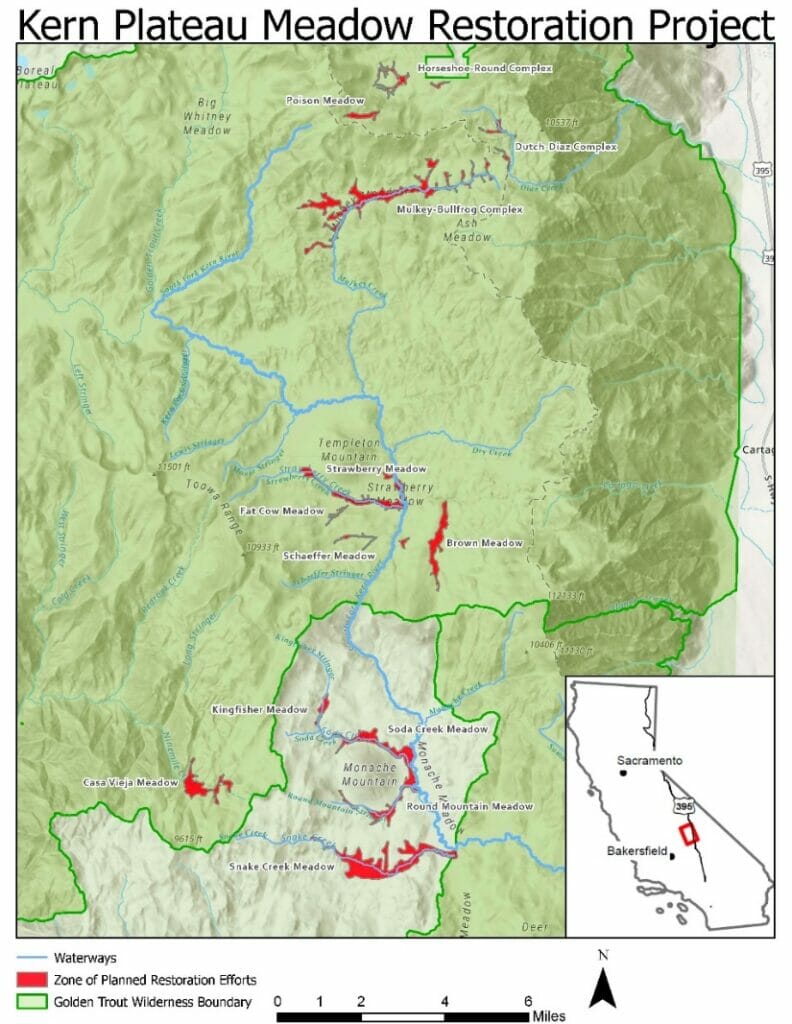
Public lands are often multi-use, working landscapes and California’s Golden Trout territory is no exception. User groups such as grazing permittees, off-highway vehicle users, anglers, and hikers all care deeply about the Sierra high country, but often for different reasons. However, everybody wins if meadow systems provide their natural scenic and ecological function. That’s why TU always works to build durable partnerships with diverse stakeholders to support our restoration work.
Finding shared goals and operating with transparency is a foundational pillar of the Golden Trout Meadows Project. For example, in October California TU staff hosted a stakeholder tour of one of our restoration sites in the region. We planned, permitted, and paid for construction at the site so stakeholders could see the structures being built in real time and offer feedback.
These key stakeholders included an array of federal and state agencies and land users, all with diverse backgrounds and viewpoints. The group convened on the pilot site to learn how Low-Tech Process-Based Restoration techniques could benefit the meadow ecosystem. The benefits were immediately apparent—as participants watched, the newly-constructed structures backfilled water in the downcut stream and reconnected to the stream’s meadow floodplain.
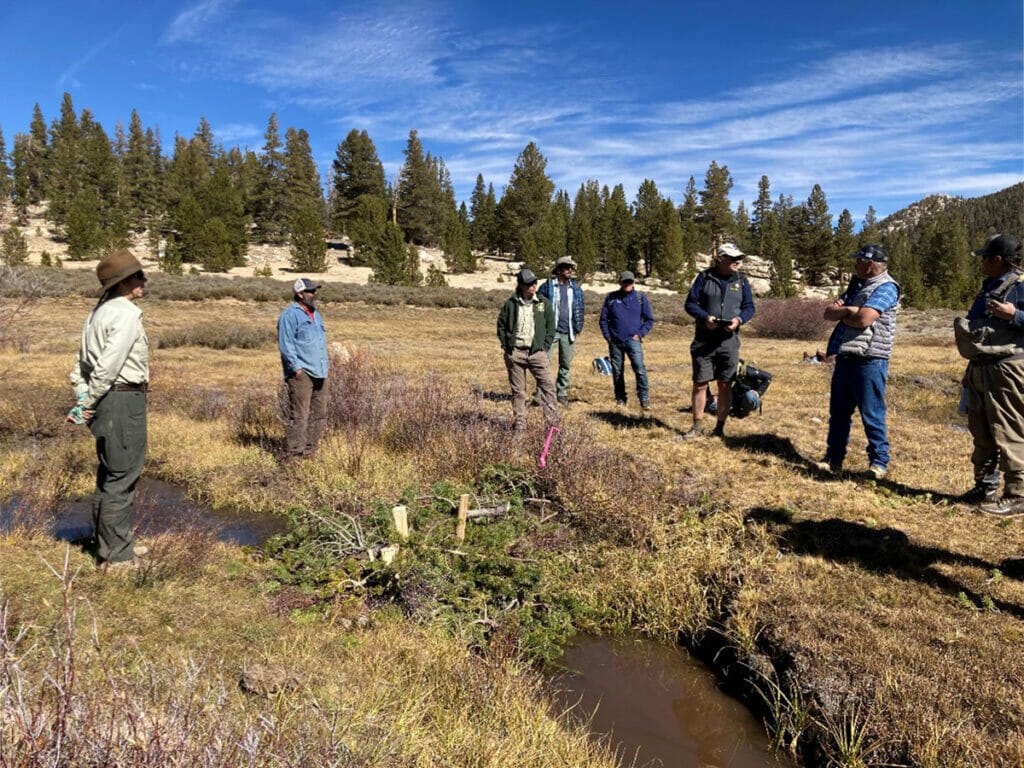
Our Forest Service partners used the opportunity to help us refine our construction techniques to protect the scenic values of the Wilderness area, while grazing stakeholders offered suggestions for structure size and cattle crossing considerations.
Conversations like these are critical to ensuring restoration projects are successful. This onsite meeting in the southern Sierra backcountry led to valuable discussions about the goals, objectives, and approaches of this project, ultimately strengthening support for the project.
Conserving and restoring coldwater habitats for trout often requires years of effort and the ability to work effectively with multiple stakeholders. The Golden Trout Meadows Project is a perfect example of this collaboration. We salute our project partners for their commitment to recovering what many people consider the most beautiful trout in the world through a long-term, large-scale effort to restore the function of the alpine meadows they rely on.
By Jessica Strickland and Dan Johnson



